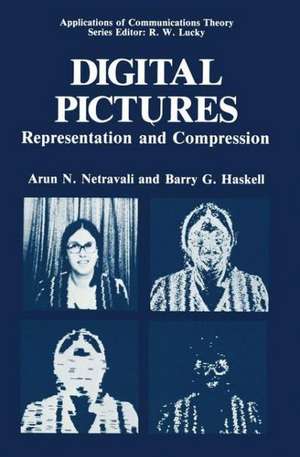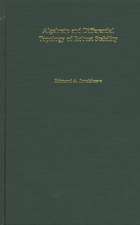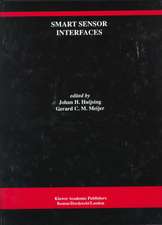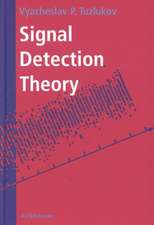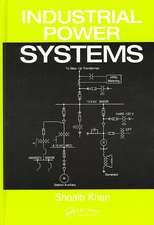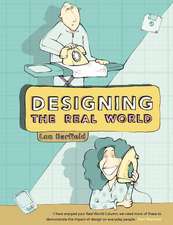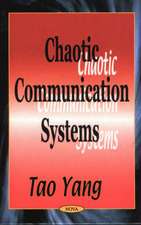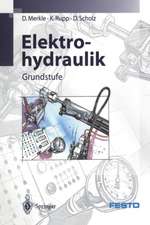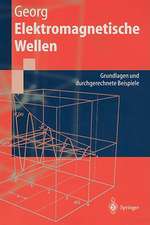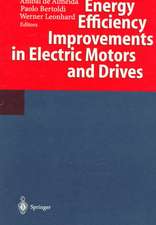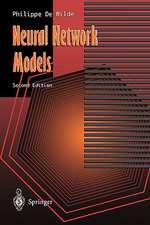Digital Pictures: Representation and Compression: Applications of Communications Theory
Autor Arun Netravalien Limba Engleză Paperback – 24 dec 2012
Din seria Applications of Communications Theory
- 15%
 Preț: 645.60 lei
Preț: 645.60 lei - 15%
 Preț: 641.71 lei
Preț: 641.71 lei - 18%
 Preț: 956.18 lei
Preț: 956.18 lei - 18%
 Preț: 2105.61 lei
Preț: 2105.61 lei - 18%
 Preț: 1243.92 lei
Preț: 1243.92 lei -
 Preț: 393.74 lei
Preț: 393.74 lei - 18%
 Preț: 2487.11 lei
Preț: 2487.11 lei - 18%
 Preț: 953.35 lei
Preț: 953.35 lei - 15%
 Preț: 650.86 lei
Preț: 650.86 lei - 18%
 Preț: 1228.96 lei
Preț: 1228.96 lei - 15%
 Preț: 649.39 lei
Preț: 649.39 lei - 18%
 Preț: 1392.95 lei
Preț: 1392.95 lei - 18%
 Preț: 1243.92 lei
Preț: 1243.92 lei - 18%
 Preț: 963.77 lei
Preț: 963.77 lei - 20%
 Preț: 337.32 lei
Preț: 337.32 lei -
 Preț: 401.79 lei
Preț: 401.79 lei - 20%
 Preț: 346.10 lei
Preț: 346.10 lei - 20%
 Preț: 341.81 lei
Preț: 341.81 lei -
 Preț: 388.13 lei
Preț: 388.13 lei - 20%
 Preț: 339.99 lei
Preț: 339.99 lei - 18%
 Preț: 962.49 lei
Preț: 962.49 lei - 18%
 Preț: 958.56 lei
Preț: 958.56 lei - 18%
 Preț: 1394.52 lei
Preț: 1394.52 lei -
 Preț: 410.07 lei
Preț: 410.07 lei
Preț: 957.75 lei
Preț vechi: 1167.99 lei
-18% Nou
Puncte Express: 1437
Preț estimativ în valută:
183.26€ • 191.34$ • 151.67£
183.26€ • 191.34$ • 151.67£
Carte tipărită la comandă
Livrare economică 05-19 aprilie
Preluare comenzi: 021 569.72.76
Specificații
ISBN-13: 9781468412963
ISBN-10: 1468412965
Pagini: 604
Ilustrații: XV, 586 p.
Dimensiuni: 152 x 229 x 32 mm
Greutate: 0.8 kg
Ediția:Softcover reprint of the original 1st ed. 1988
Editura: Springer Us
Colecția Springer
Seria Applications of Communications Theory
Locul publicării:New York, NY, United States
ISBN-10: 1468412965
Pagini: 604
Ilustrații: XV, 586 p.
Dimensiuni: 152 x 229 x 32 mm
Greutate: 0.8 kg
Ediția:Softcover reprint of the original 1st ed. 1988
Editura: Springer Us
Colecția Springer
Seria Applications of Communications Theory
Locul publicării:New York, NY, United States
Public țintă
ResearchCuprins
1. Numerical Representation of Visual Information.- 1.1 Visual Information.- 1.2 Representation by a Finite Amount of Data.- 1.3 Spatial Sampling Representation.- 1.4 Raster Scan.- 1.5 Fourier-Frequency Domain.- 1.6 Time Varying Images.- 1.7 Quantization and Binary Word Assignment—PCM.- 1.8 Color Images.- 1.9 Graphics.- 2. Common Picture Communication Systems.- 2.1 Monochrome Television.- 2.2 Color Television.- 2.3 Videoconferencing.- 2.4 Videotelephone.- 2.5 High Definition Television (HDTV).- 2.6 Graphics.- 2.7 Interactive Picture Communication Systems.- 2.8 Earth Resources Imagery.- 3. Redundancy-Statistics-Models.- 3.1 Redundancy in the Sampled Data—Information Theory.- 3.2 Monochrome Luminance Statistics.- 3.3 Color Picture Statistics.- 3.4 Statistics of Graphical Signals.- 4. Visual Psychophysics.- 4.1 Subjective Testing.- 4.2 The Human Eye.- 4.3 Psychophysics of Vision.- 4.4 Psychophysics of Color Vision.- 4.5 Models for Picture Quality.- 5. Basic Compression Techniques.- 5.1 Pulse Code Modulation (PCM).- 5.2 Predictive Coding.- 5.3 Transform Coding of Blocks of Samples.- 5.4 Hybrid Transform Coding Techniques.- 5.5 Other Block Coding.- 5.6 Miscellaneous Coding Methods.- 5.7 Coding of Graphics.- 6. Examples of Codec Designs.- 6.1 Image Coding Method for Freeze-Frame Videoconferencing.- 6.2 45 Mbs Intrafield DPCM Codec for NTSC Color Video.- 6.3 Adaptive Predictive Interfield Coder for NTSC Color TV.- 6.4 Interfield Hybrid Transform Coder for Component Color TV.- 6.5 Decomposition of Single Images into Edges and Texture.- 6.6 Conditional Replenishment DPCM Codecs.- 6.7 Graphic Coders.- 7. Postscript.- 7.1 Signal Sources.- 7.2 The Human Receiver.- 7.3 Waveform Encoding.- 7.4 Parameter Coding.- 7.5 Bit Rates Versus Complexity.- 7.6 Future Directions and UltimateLimits.- 7.7 Concluding Remarks.
